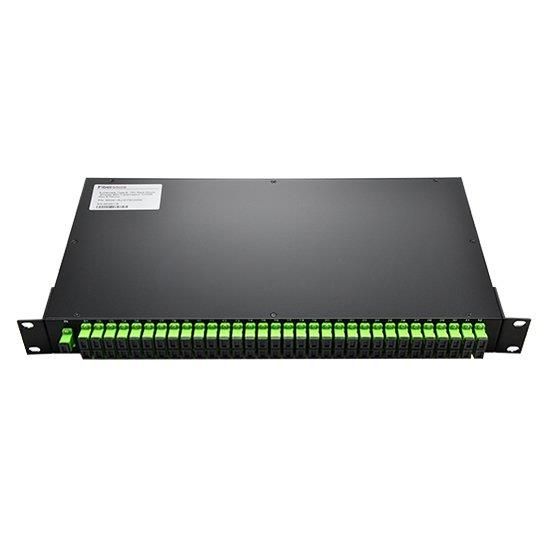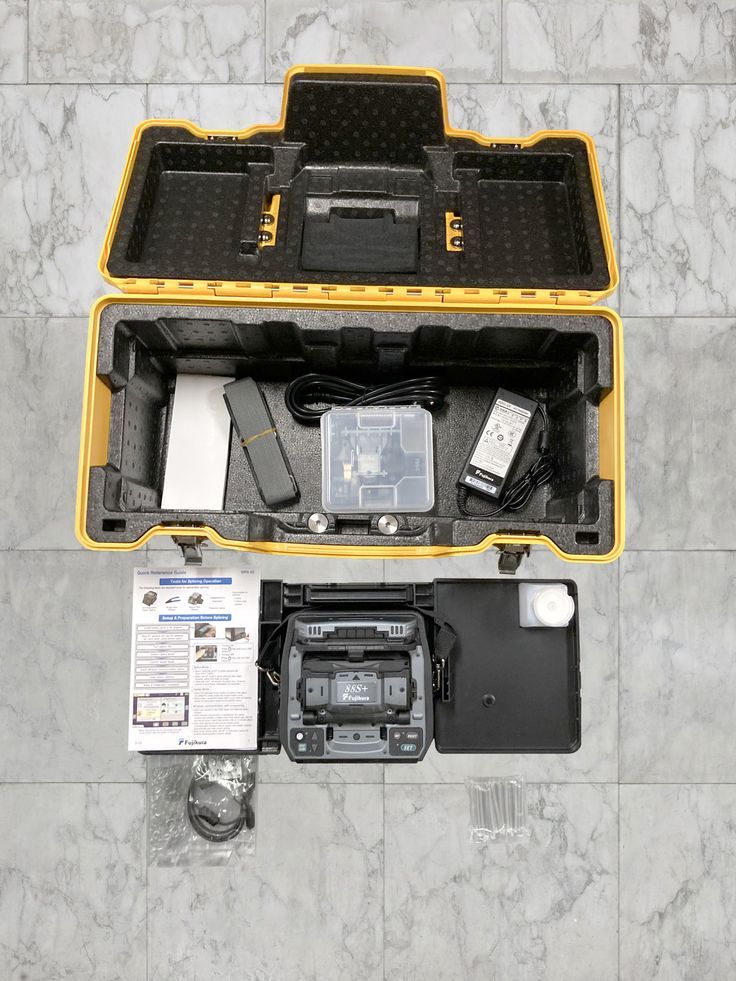The Advantages of DWDM Mux for Long-haul Communications
Intro
DWDM mux, or Dense Wavelength Division Multiplexing, is a cutting-edge technology used for long-haul communications. This WDM mux is a cost-effective and reliable way of transmitting large volumes of data over long distances by combining multiple signals into a single fiber optic cable. In this blog post, we will discuss the advantages of DWDM mux for long-haul communications.
What is a DWDM Mux?
A DWDM Mux, or DWDM meaning (Dense Wavelength Division Multiplexing), is a device used in long-haul communications to transmit large volumes of data over long distances. It is a cutting-edge technology that allows for the combination of multiple signals onto a single fiber optic cable.
But what exactly is a DWDM Mux and how does it work?
In simple terms, a DWDM Mux is a machine that uses different wavelengths of light to transmit data over a fiber optic cable. Each signal is assigned a specific wavelength, and these signals are then multiplexed together using a DWDM filter. The DWDM Mux acts as a multiplexer, combining the signals onto a single fiber, and then as a demultiplexer, separating the signals at the receiving end.
The main advantage of using a DWDM Mux for long-haul communications is the enhanced bandwidth and capacity it provides. By utilizing different wavelengths of light, a DWDM Mux can transmit multiple signals simultaneously, greatly increasing the amount of data that can be transmitted over a single fiber. This leads to significant cost savings as fewer fiber optic cables are required for transmitting large volumes of data.
In addition to enhanced bandwidth, a DWDM Mux also offers greater security and reliability. Since each signal is assigned a specific wavelength, it is easier to isolate and troubleshoot any issues that may arise. This allows for quicker and more efficient problem resolution, minimizing downtime and improving network reliability.
Furthermore, a DWDM Mux improves network efficiency by maximizing the utilization of fiber optic cables. With its ability to combine multiple signals onto a single fiber, it reduces the need for additional infrastructure, such as routers and switches, resulting in cost savings for network operators.
However, deploying DWDM Muxes also comes with its own set of challenges. These challenges include the need for precise alignment and calibration of the optical signals, as well as the potential for signal interference and crosstalk. Overcoming these challenges requires expertise and specialized equipment, making the deployment process more complex.
How Does a DWDM Mux Work?
A DWDM Mux, or Dense Wavelength Division Multiplexing Mux, is a complex machine that plays a crucial role in long-haul communications. But how exactly does it work?
At its core, a DWDM Mux is designed to combine multiple signals onto a single fiber optic cable and separate them at the receiving end. It achieves this by utilizing different wavelengths of light. Each signal is assigned a specific wavelength, and these signals are then multiplexed together using a DWDM filter. This process is known as multiplexing.
The DWDM Mux acts as a multiplexer, combining the signals onto a single fiber, and then as a demultiplexer, separating the signals at the receiving end. It achieves this by using a technology known as wavelength routing. Each signal is transmitted using a different wavelength of light, allowing multiple signals to be transmitted simultaneously over a single fiber.
To ensure accurate transmission and reception of the signals, the DWDM Mux requires precise alignment and calibration of the optical signals. This ensures that each signal is properly encoded and decoded, minimizing the potential for signal interference and crosstalk.

The DWDM Mux is typically equipped with a 40-channel DWDM wavelength chart, which allows for the transmission and reception of a large number of signals. This high capacity makes it an ideal solution for long-haul communications where large volumes of data need to be transmitted.
In summary, a DWDM Mux is a sophisticated machine that combines and separates multiple signals using different wavelengths of light. Its ability to transmit and receive large volumes of data over a single fiber optic cable makes it a key component in long-haul communications.
Benefits of Using a DWDM Mux for Long-haul Communications
Using a DWDM Mux for long-haul communications offers numerous benefits, making it a highly desirable technology in the telecommunications industry.
Firstly, one of the major advantages of using a DWDMMultiplexer is the enhanced bandwidth and capacity it provides. With the ability to combine multiple signals onto a single fiber optic cable, a DWDM Mux enables the transmission of large volumes of data simultaneously.
This greatly increases the amount of information that can be transferred over a single fiber, leading to improved efficiency and cost savings. Additionally, as the demand for higher bandwidth continues to grow, a DWDM Mux allows for future scalability without the need for additional infrastructure.
In addition to its increased capacity, a DWDM Multiplexer also offers greater security and reliability. With each signal assigned a specific wavelength, it becomes easier to isolate and troubleshoot any issues that may arise. This improves the efficiency of problem resolution, minimizes downtime, and enhances overall network reliability.
Another significant benefit of using a DWDM Mux is improved network efficiency and cost savings. By combining multiple signals onto a single fiber, it reduces the need for additional infrastructure such as routers and switches. This results in cost savings for network operators and enables better utilization of existing fiber optic cables. Additionally, a DWDM Mux can support different protocols and data rates, making it a versatile solution for various network configurations.
Despite these numerous benefits, deploying DWDM Multiplexer does come with its challenges. Precise alignment and calibration of the optical signals are crucial to ensure accurate transmission and reception. Moreover, signal interference and crosstalk can pose potential problems that require expertise and specialized equipment to overcome.
In summary, the advantages of using a DWDM Multiplexer for long-haul communications include enhanced bandwidth and capacity, greater security and reliability, improved network efficiency and cost savings. Despite the challenges associated with deployment, the benefits outweigh the complexities, making DWDM Mux a highly valuable technology for long-haul communications.
Enhanced Bandwidth and Capacity
A major advantage of using a DWDM Mux for long-haul communications is the enhanced bandwidth and capacity it provides. With the ability to combine multiple signals onto a single fiber optic cable, a DWDM Mux enables the transmission of large volumes of data simultaneously. This greatly increases the amount of information that can be transferred over a single fiber, leading to improved efficiency and cost savings.
Compared to other multiplexing technologies like CWDM Mux, which only supports a limited number of channels, a DWDM Mux can support a much larger number of channels, typically ranging from 40 to 80 channels.
Each channel is assigned a specific wavelength, allowing for the simultaneous transmission of multiple signals. This high capacity makes it ideal for long-haul communications where large volumes of data need to be transmitted.
Additionally, as the demand for higher bandwidth continues to grow, a DWDM Mux allows for future scalability without the need for additional infrastructure. Network operators can simply add or remove channels as needed, without disrupting the existing network.
By utilizing the full potential of the fiber optic cable, a DWDM Mux maximizes the utilization of the infrastructure, reducing the need for additional cables and equipment such as routers and switches. This not only saves on costs but also simplifies network management.
In summary, the enhanced bandwidth and capacity of a DWDM Multiplexer make it a powerful solution for long-haul communications. It allows for the simultaneous transmission of multiple signals, supports a large number of channels, and provides scalability for future growth. These advantages contribute to improved efficiency, cost savings, and better utilization of the network infrastructure.
Greater Security and Reliability
In addition to its enhanced bandwidth and capacity, a DWDM Multiplexer also offers greater security and reliability for long-haul communications. This is achieved through its unique characteristics and capabilities.
One of the main advantages of a DWDM Mux is its ability to assign each signal a specific wavelength. This wavelength assignment ensures that each signal is isolated and can be easily identified and troubleshooted if any issues arise. This improves the efficiency of problem resolution, minimizes downtime, and enhances overall network reliability.
Moreover, the use of a DWDM Mux enables the transmission of multiple signals over a single fiber optic cable. This consolidated approach reduces the number of fibers needed for transmission, simplifying the network architecture and reducing the potential points of failure. By minimizing the number of physical connections, a DWDMMultiplexer decreases the risk of signal loss, degradation, and other network vulnerabilities.

The security and reliability of a DWDM Multiplexer are further enhanced through its compatibility with other network elements, such as fiber multiplexers and transponders. These devices work in conjunction with the DWDM Mux to provide additional layers of security and error correction, ensuring that the transmitted data arrives accurately and securely at its destination.
Overall, the use of a DWDM Multiplexer in long-haul communications offers greater security and reliability. Its ability to assign specific wavelengths to each signal, consolidate multiple signals onto a single fiber, and integrate with other network elements provides a robust and dependable solution for transmitting large volumes of data over long distances.
Improved Network Efficiency and Cost Savings
Using a DWDM Mux for long-haul communications offers significant improvements in network efficiency and cost savings. One of the key advantages is the consolidation of multiple signals onto a single fiber optic cable. By combining these signals, network operators can reduce the need for additional infrastructure such as routers and switches. This not only saves on equipment costs but also simplifies network management.
Additionally, the use of a DWDM Mux maximizes the utilization of existing fiber optic cables. With its ability to transmit multiple signals simultaneously, a DWDM Multiplexer eliminates the need for multiple dedicated fibers. This efficient use of infrastructure not only saves on cable costs but also reduces the physical space required for network deployment.
Moreover, a DWDM Mux is a versatile solution that supports different protocols and data rates. This flexibility allows network operators to accommodate various network configurations without the need for additional equipment or upgrades. Whether it’s for voice, data, or video transmission, a DWDM Mux can adapt to different requirements, resulting in further cost savings and improved network efficiency.
By optimizing network resources and minimizing the need for additional infrastructure, a DWDM Mux helps network operators reduce operating expenses while maximizing the performance of their long-haul communications networks. This, in turn, improves the overall cost-effectiveness of their operations.
In summary, the use of a DWDM Mux for long-haul communications leads to improved network efficiency and significant cost savings. Through the consolidation of signals onto a single fiber optic cable and the elimination of additional infrastructure, network operators can maximize the utilization of their resources and reduce operating expenses. The versatility of a DWDM Mux also ensures that it can adapt to different network configurations, providing further cost savings and enhanced efficiency.
Challenges with Deploying DWDM Multiplexer :fiber multiplexer single mode,passive dwdm
Deploying DWDM Muxes for long-haul communications comes with its own set of challenges. While the benefits of enhanced bandwidth, greater security, and improved network efficiency make DWDM Mux a highly valuable technology, it is important to consider the complexities that arise during the deployment process.
One challenge with deploying DWDM Multiplexer(cwdm mux) is the need for precise alignment and calibration of the optical signals. The wavelength routing technology used by DWDM Muxes requires accurate encoding and decoding of each signal, which can be challenging to achieve. Misalignment or miscalibration can result in signal interference and crosstalk, impacting the overall performance and reliability of the system.
Furthermore, the potential for signal interference and crosstalk is another challenge that needs to be addressed during deployment. With multiple signals being transmitted simultaneously over a single fiber optic cable, there is a risk of interference between the signals, leading to data loss or corruption. To overcome this challenge, specialized equipment and expertise are required to ensure that each signal is properly isolated and protected from interference.
Additionally, the complexity of deploying DWDMMultiplexer/dwdm transponder increases with the size of the network. As the number of channels and wavelengths increases, the management and configuration of the system become more intricate. Network operators need to carefully plan and design the network architecture to accommodate the specific requirements of their long-haul communications.
Despite these challenges, the benefits of using DWDM Multiplexer for long-haul communications outweigh the complexities. With proper expertise, specialized equipment, and careful planning, network operators can successfully deploy DWDM Muxes and harness their advantages in terms of enhanced bandwidth, greater security, and improved network efficiency. The challenges should be seen as opportunities for growth and optimization, leading to a more efficient and cost-effective long-haul communications network.
dwdm meaning,cwdm mux,dwdm filter,mux fiber,wdm machine,40 channel dwdm wavelength hart,
cwdm multiplexer,cwdm mux demux,dwdm multiplexer,dwdm mux demux,dwdm transponder,
fiber multiplexer single mode,passive dwdm
Also read:Framing in Data Link Layer







